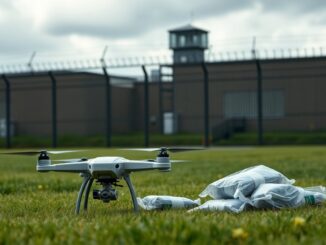A deep dive into the stakes and consequences of Florida's Alligator Alcatraz facility.

Topics covered
Florida’s bold move to build a new detention center for undocumented migrants has ignited a fierce debate. It’s not just the controversial location that has people talking; the staggering operational costs are making headlines too. Dubbed ‘Alligator Alcatraz,’ this facility, rising from a former airfield in the Everglades, is projected to hit taxpayers with a whopping $450 million annual bill.
As we dive into this development, let’s explore the motivations behind it and what it could mean for Floridians.
Questioning the Rationale Behind ‘Alligator Alcatraz’
So, here’s the question: is this facility really a solution to the challenges posed by undocumented immigration, or is it more of a political stunt? The buzz surrounding its construction is met with plenty of skepticism, especially when we look at the history of similar proposals.
Florida Attorney General James Uthmeier, a close ally of former President Trump, argues that the remote location will minimize security needs. But does that really hold water?
Housing thousands in tents within swampland? That echoes some of the impractical ideas tossed around during Trump’s administration, which often leaned heavily on fear rather than viable solutions.
The implications of this facility reach far beyond logistics; they tap into crucial human rights and environmental issues. When assessing any project’s sustainability, we must consider not just the financial implications but also its broader societal impact.
Breaking Down the Costs and Potential Consequences
The projected annual price tag of $450 million raises eyebrows, especially when you compare it to Florida’s current budget and social services. Imagine if that money was redirected toward programs that promote integration, education, and healthcare—initiatives that would provide long-term benefits for all residents, regardless of their immigration status.
While the Federal Emergency Management Agency (FEMA) is expected to kick in some financial support, we have to wonder about the sustainability of that funding in the long run. If this center becomes a permanent fixture, what will it mean for the state’s budget? The burn rate of such a facility could force cuts to essential services if not managed carefully.
Miami-Dade County Mayor Daniella Levine Cava has raised valid concerns regarding the environmental impact on the Everglades, a critical ecosystem. The idea of placing a detention center in the midst of such a vital natural resource highlights a serious disconnect in planning priorities. We cannot afford to sacrifice the Everglades as a clean water source for a politically charged initiative.
Lessons from History: Successes and Failures
History is littered with examples of grand projects that aimed to tackle pressing issues but ultimately flopped. The construction of detention facilities often mirrors past efforts that failed to address the root causes of immigration, all while racking up hefty bills. Take the infamous family separation policy, for instance. Despite its intentions to deter illegal immigration, it sparked outrage and did nothing to resolve the underlying problems.
For founders and project managers, the lesson here is clear: align projects with sustainable practices and community needs. Think of a detention center as a product—its market includes the community, environmental stakeholders, and even the detainees themselves. Failing to consider this can lead to high churn rates in community support and operational efficiency.
Actionable Takeaways for Stakeholders
As the construction of this detention center unfolds, it’s crucial for stakeholders to engage in meaningful dialogue about its implications. Here are some actionable steps for those involved:
- Conduct a comprehensive environmental impact assessment: Understand the potential harm to the Everglades and tackle it head-on.
- Engage the community: Involve local residents in discussions about the center’s operations and how it might affect their lives.
- Assess financial sustainability: Ensure stable funding sources so that this project doesn’t come at the expense of essential public services.
- Focus on human rights: Implement policies that prioritize the health and safety of detainees and staff to avoid repeating past mistakes.
Ultimately, the story of Florida’s Alligator Alcatraz facility goes beyond immigration; it’s a mirror reflecting our societal values and priorities. In a time when data-driven decisions are more important than ever, we need to ask ourselves: are we making choices that truly serve our best interests as a society?




